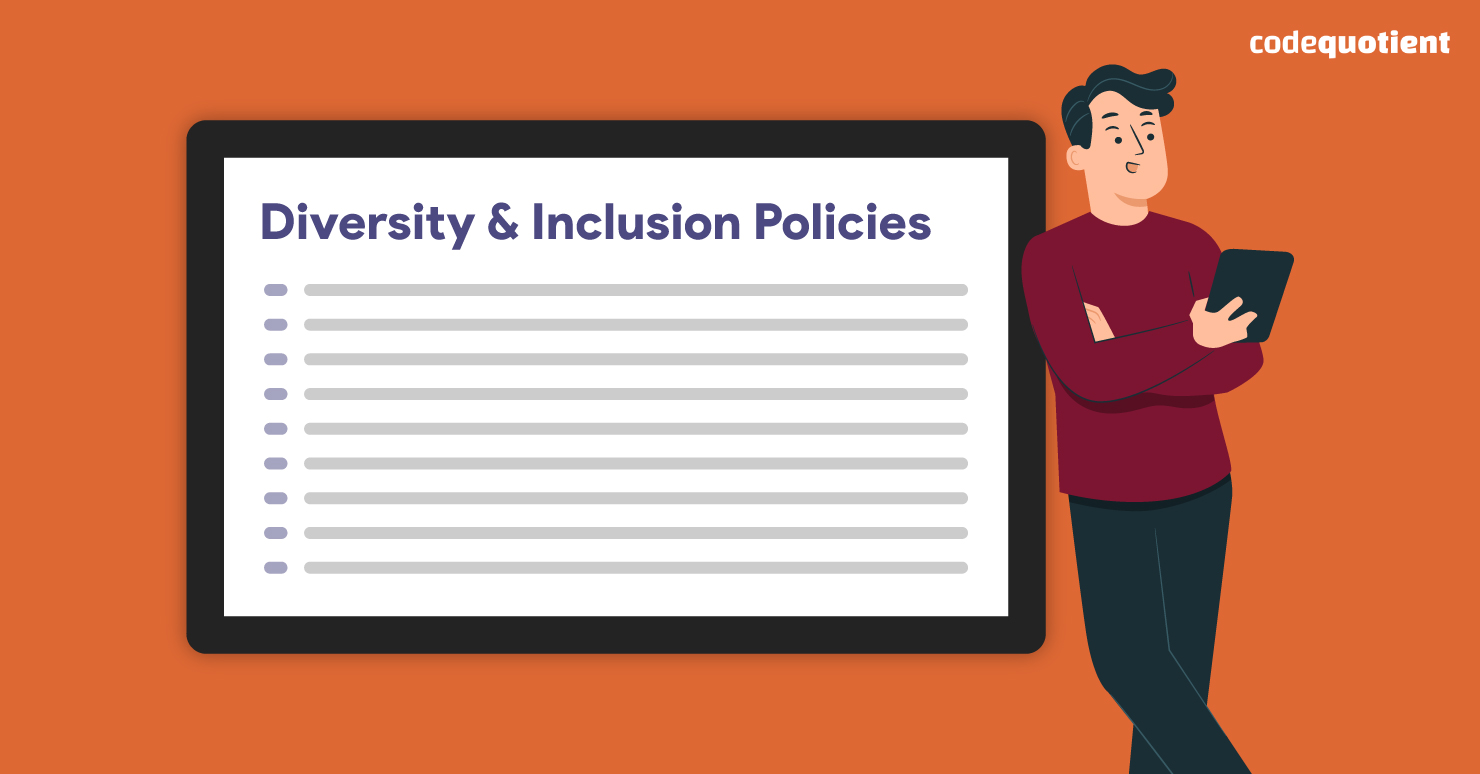In recent years, diversity and inclusion (D&I) have become inseparable components of discussions about establishing a successful team and culture. These matter a lot, and all organizations make it a point to include D&I policies in the workplace.
But are they as effective as they appear on paper?
To develop clear diversity and inclusion plans, employers must understand the fundamental differences between the two.
What is Diversity and Inclusion (D&I)?
A company’s practices for supporting a diverse workplace and leveraging the effects of diversity to generate a competitive business advantage are known as D&I Policies. Companies that foster an inclusive workplace are more adaptable, creative, and attractive to top talent.
Workplace diversity is understanding, accepting, and valuing differences amongst people, including those:
- Of various races, ethnicities, genders, ages, religions, disabilities, and sexual orientations.
- With differences in education, personalities, skills, and knowledge.
However, workplace inclusion is a collaborative, friendly, and respectful company’s inclusive culture that encourages all employees to participate and contribute. True inclusion, on the other hand, eliminates all barriers, discrimination, and intolerance. Therefore, it’s natural for everyone to feel included and supported in the workplace when it’s done correctly.
Benefits of Diversity and Inclusion in the Workplace:

To recruit the best talent with the best minds, skills, and experience, your company must allocate resources and training efforts. The following are some of the most significant advantages of emphasizing D&I Policies in the workplace:
1. Boosts Innovation and Creativity
Diversity in the workplace will positively impact organizational innovation and creativity. Having employees from various backgrounds brings different perspectives and ideas into everyday business.
Diverse people have come from varied backgrounds and have had a variety of life experiences. It helps them to propose innovative ideas and solutions to any business problem. Thereby helping out to boost innovation and creativity in your organization.
2. Boosts Company’s Reputation
Encouragement of D&I Policies in the workplace will also help to strengthen the company’s brand identity. Companies that promote workplace diversity are seen as more humane and socially responsible.
Supporting diversity and inclusion also demonstrates an employer’s morale, justice, and sensitivity. These employers’ characteristics are often desirable to millennials and Gen Zs.
3. Improves Employee Engagement
This benefit is an absolute no-brainer. Workplace diversity boosts employee engagement. Highly engaged employees will always go the extra mile for the organization.
Your employees in the company will feel more involved and appreciated if they feel included and valued. When employees realize their views matter, they are more engaged and interested in the company’s culture and activities. Employees who work in inclusive environments also have better physical and emotional health and take fewer sick days.
4. Bigger Talent Pool
You’ll always receive the same type of people if you don’t change how your recruiting process is arranged. Expanding your recruiting search to include more diverse candidates—including those with different backgrounds, ethnicities, ages, and so on—enlarges your talent pool and improves your chances of finding the ideal hire.
Aside from the fact that diversity benefits your organization, 67 percent of candidates think about it when looking for work (glassdoor).
Ways HR Can Cultivate a D&I Environment
HR policies should be open and honest, and there should be a proactive commitment to identify and address unconscious bias in your systems.
Consider applying the following measures to help your workplace become more inclusive:
1. Conduct an Employee Survey and Take Action Based on the Results
Asking employees what they need to feel involved is the best method to learn what they require. Making a plan based on assumptions misses the objective of being inclusive entirely.
A confidential survey allows employees to express their opinions freely and without fear of retaliation.
Employees should be able to submit their thoughts and suggestions about how the workplace can become more inclusive in a poll.
After collecting data about your customers, you can use it to determine what changes need to be made and create a plan for how those improvements will be implemented.
2. Reassess Employee Policies
Examine your employment policies to see whether there are any impediments to inclusiveness. There should be well-known workplace behavior expectations that emphasize treating others with decency and respect.
Explain what constitutes discrimination and harassment and the ramifications of such behavior. Ascertain that managers have a solid awareness of the policies and are prepared to respond to any complaints swiftly and effectively.
3. Make Inclusion Part of the Onboarding Process
A welcoming and comfortable onboarding experience sets the tone for how connected new workers feel to the firm. From day one, a new hire’s experience at your organization will be shaped by their belief that they are valued and included.
Keeping inclusion at the forefront of the onboarding process gives the idea that they will receive the assistance they require as they settle in. Make sure new hires understand how they can foster this environment and that discrimination will not be tolerated.
4. Bring Inclusion to the Virtual Workplace
Many employees value the advantages of remote work, but it has some drawbacks, such as the employees’ sense of belonging. Therefore, employers must adapt to these scenarios to avoid virtual places becoming barriers to engaging with remote workers.
Managers may foster inclusion by establishing a human connection with their remote teams. They should organize virtual social and team-building events and check in with everyone regularly. You can also provide remote employees with the same assistance as on-site employees, such as schedule and deadline flexibility and mental health resources.
5. Review Recruiting and Compensation Practices
Examine the recruiting methods regularly to ensure they do not discriminate against certain groups and are equally accessible to all applicants. Job descriptions should focus only on objective criteria established through a thorough job analysis.
Compensation policies should be transparent and well-organized. Starting salaries, performance-based pay, and bonus guidelines must be well-structured, and all employees must be able to grasp the requirements.
Now that you know what to focus on, it’s time to start. So go out there and put all the things mentioned above into practice. For more such articles, check out our blog or to hire the best tech candidates to get in touch with us.




